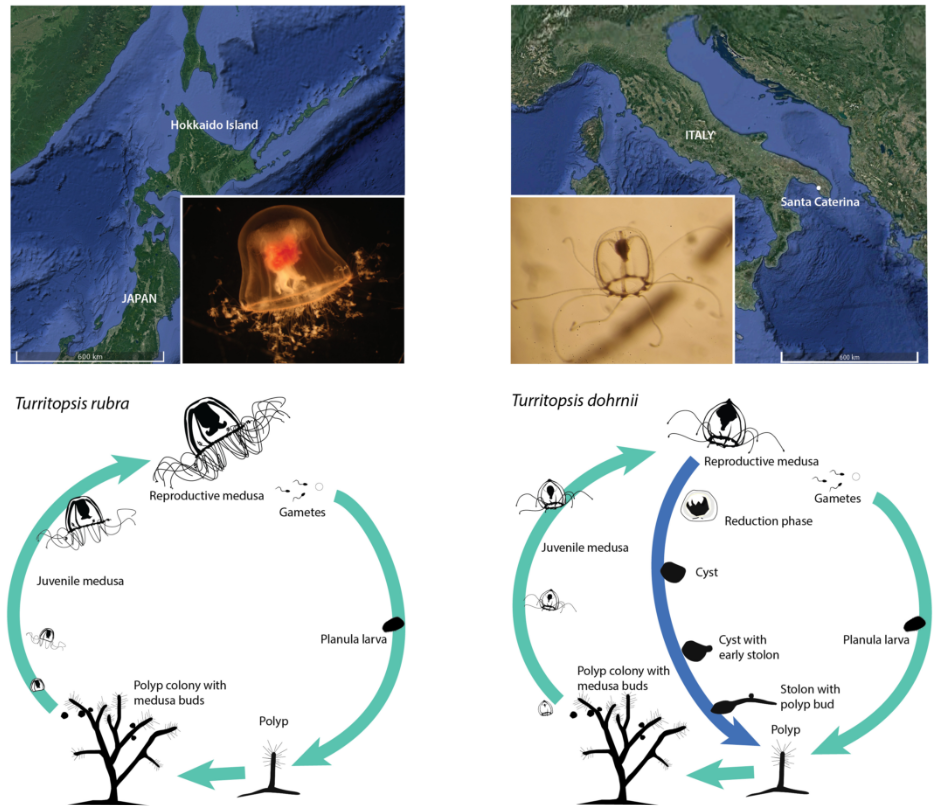The study offered a vital finding regarding prolonging an organism’s health span, or healthy years.
A group of Spanish scientists has succeeded in sequencing the DNA of a jellyfish known for its ability to resuscitate itself after death, as part of a study published in the journal PNAS.
The tiny sea species known as the ‘immortal jellyfish’ may turn back the biological clock and change into a collection of juvenile cells even after sexual reproduction, a report by The Independent said.
Maria Pascual-Torner and her colleagues at Spain’s University of Oviedo compared the immortal jelly’s genome to that of a closely related species, Turritopsis rubra, the crimson jellyfish, which cannot reverse its ageing process as easily.
Researchers determined that the immortal jellyfish possessed mutations that allowed it to limit cell division and prevent the breakdown of telomeres – protective caps over the chromosomes – from breaking down. After examining the two medusas, researchers found it had possessed twice as many genes associated with DNA repair and protection.
The immortal jellyfish, in addition to suppressing developmental genes, triggered additional genes that allowed the reverted cells to “re-specialise” once the colony split off into swimming individuals once more.

When medusae, or adult jellyfish, feel a threat from changing environmental conditions, they reverse their genetic clock to become larval once more, becoming nothing more than a thin coating of cells and tissue floating through the water looking for a rock or seagrass blade to cling to.
According to The Wall Street Journal, the scientists expressed hope that their genome mapping might lead to discoveries on human ageing and measures to increase life expectancy.
“It’s a mistake to think we will have immortality like this jellyfish because we are not jellyfish,” she said. But it’s possible something in the immortal jellyfish’s evolutionary trick can be used to better understand the pathologies of aging,” Pascual-Torner said.
According to Dr. Jan Karlseder, a molecular biologist and head of the Glenn Center for Biology of Aging Research at the Salk Institute, the study offered a vital finding regarding prolonging an organism’s health span, or healthy years.







